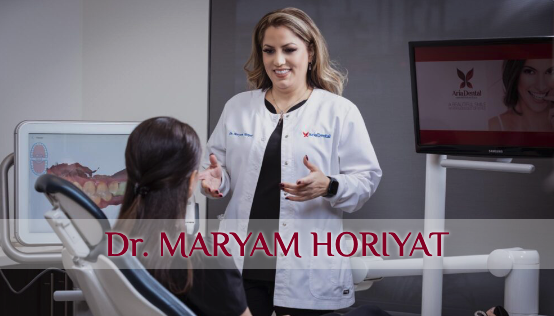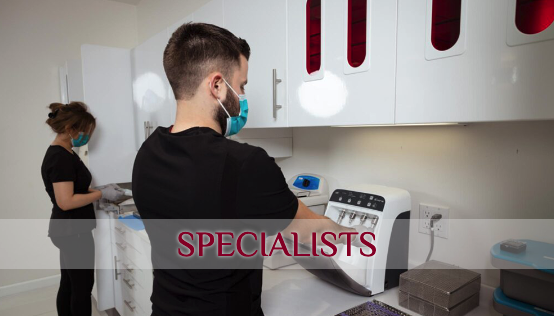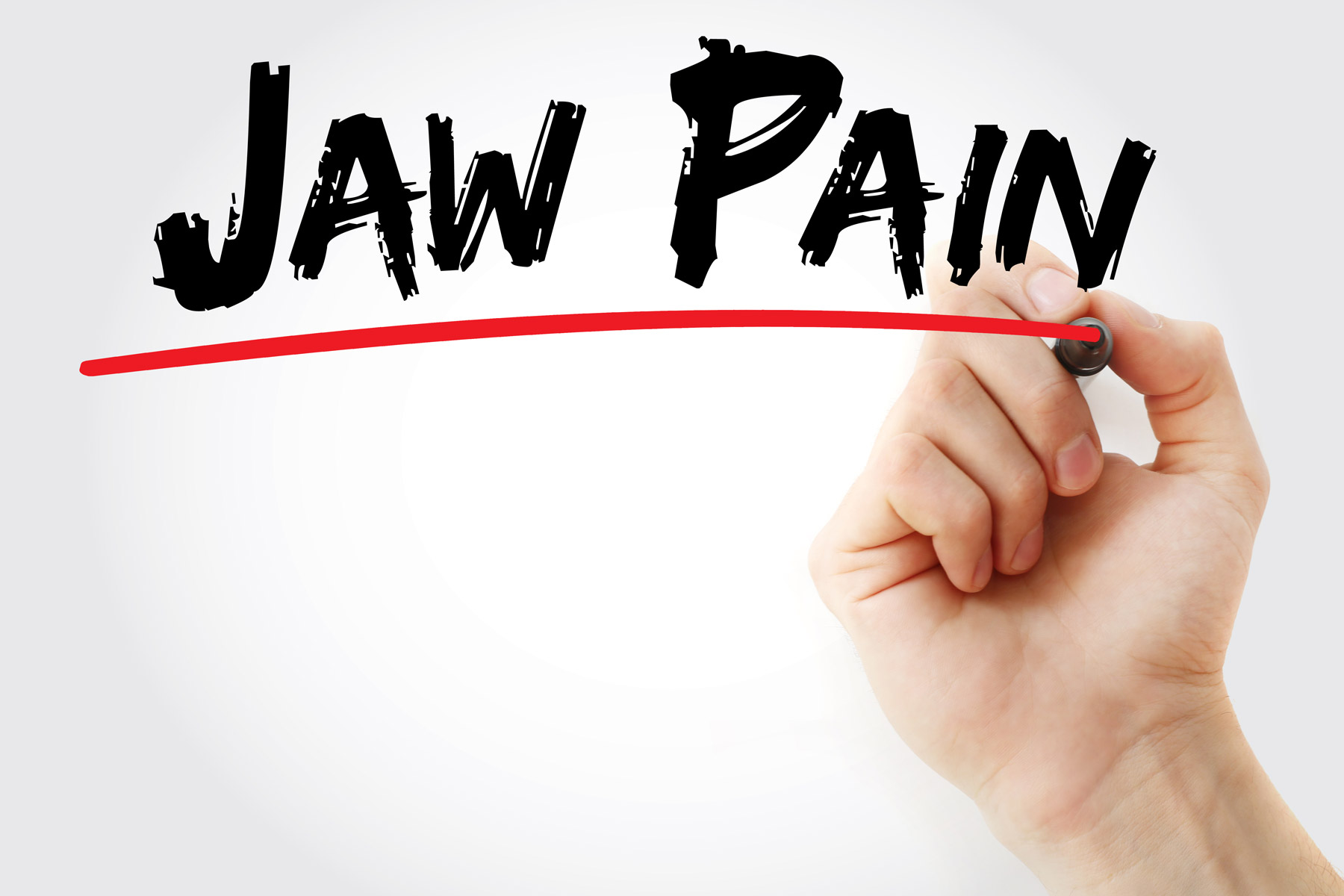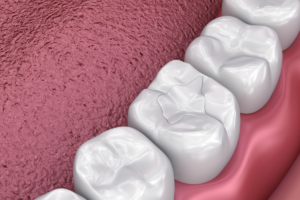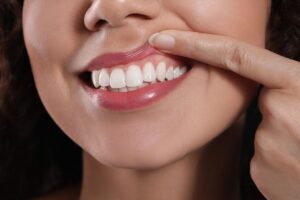Chronic facial pain, regular neck discomfort, frequent headaches!?
All are very likely to be quite close to you if you live in the USA.
We have to put the blame on your jaw!
A world of Pain Can Cascade From Your Jaw
Seemingly untrue, an issue in your jaw can be responsible for the discomfort in other parts of your body.
If it has been years since you first began trying different types of remedies for the chronic pain in your face, jaw, head, or neck without discovering the underlying reason, you are not alone!
Millions of Americans are reported to suffer from these undesirable conditions, which generally arise due to disorders in the masticatory system causing temporomandibular joints (TMJ) complications.
Dentistry Needs to Treat The Cause, Not the Symptoms!
A variety of symptoms such as severe headaches, jaw, neck, back, and shoulder pain are associated with temporomandibular joint dysfunction (TMD) and can be improved with the proper therapy for your temporomandibular joint, which is the body of your physiological structure in the masticatory system.
The masticatory system that comprises the jaw, teeth, temporomandibular joints, lips, cheeks, and masticatory muscles, is responsible for chewing the food before it is swallowed. It is defined by the core physiological structure of the jaw, studied by gnathologists.
Gnathological Dentistry Decodes the Stomatognathic System
Gnathology is a form of dentistry that focuses on the stomatognathic system with respect to the entire stomatognathic complex. It comprehends how the dynamics of mandibular movement can affect the anatomy of all the teeth and their outlook in the dental arches by measuring and recording mandibular movements for an accurate diagnosis. The physiological structure of the masticatory system can be imperfect with possible functioning disorders such as jaw pain, mouth discomfort, locked jaw, or difficulty opening the mouth.
Gnathological dentistry strives to minister these disturbances by treating people with TMD symptoms with the help of the recorded information, and program them into an adjustable articulator.
Gnathological objectives of dental treatments include minimizing excessive stress on the teeth, the muscles, the ligaments, and the temporomandibular joints. The treatment process involves realigning the jaw through a particular orthotic device.

Temporomandibular Joints May Move Out of Alignment
Your temporomandibular joints, located at the base of the skull, are responsible for linking your skull to your lower jawbone. Like any other joint, these jaw joints are composed of cartilage, muscles, ligaments, and bone. Commonly referred to as the TMJ, they accompany your face throughout the day and assist in movements such as speaking, chewing, swallowing, and yawning.
Since the TMJ allows for movement both up and down as well as from side to side, severe TMJ disorders call for medical attention and effective treatments, as the consistent pain in and around these joints could be quite unpleasant and may even restrict movement. There is a range of possible manifestations causing variable TMJ disorders, which are a broad category, but there are also a variety of restorative opportunities readily available.
TMJ Does Not Always Point The Finger at Genetics!
TMJ disorders do not always have a genetic basis; they can also be hormonal or environmental, affected by your lifestyle. For example, Women complain from TMJ disorders at a higher rate than men; violinists too experience TMJ disorders at a higher rate than the general population, as their job requires them to place the instrument under their jaw. Stress, physical injury, autoimmune diseases, infections, joint inflammation, or clenching the teeth during sleep can all lead to TMJ disorders.
Your Jaw May Pop And Lock If Your Mouth Opens Wide!
A variety of symptoms may be correlated to TMJ disorders. Pain, especially in the jaw joint, is the most noticeable symptom. In the absence of pain, one should look for other likely symptoms, including jaw muscle stiffness, limited movement, and painful clicking.
Pain
One of the most common signs of TMD is the pain you feel when moving your jaw. Headache, neck ache, backache, and earaches may also occur. The ache is qualitatively a dull discomfort, but it can worsen, causing feelings of tension, tightness, or fatigue on the sides of your head. Its frequency varies periodically, and if constant, its intensity changes throughout the day. The pain typically deepens with jaw movements and can take different forms:
- Headache:
The most familiar symptom. Headaches that get worse during sleep or upon waking up are typically associated with TMJ conditions. TMDs may even initiate vascular or migraine headaches.
- Facial pain:
You may suffer from pain in your jaw joints, the sides of your face, your cheeks, and your lower jaw as a result of TMD.
- Earache:
The secondary symptom is related to the close anatomical relationship between the jaw joints and ear canals, and can emerge as ringing in your ears or tinnitus, and a stuffy sensation. Hearing loss and dizziness have been occasionally reported. These ear symptoms may be mistaken as signs of sinus problems.
- Neck and shoulder pain:
If not indicating a particular neck problem, the pain you experience can be linked with the TMJ problems.
- Toothache:
The toothache is usually generalized, variable, and can change locations in the mouth if it is developed due to TMJ disorders.
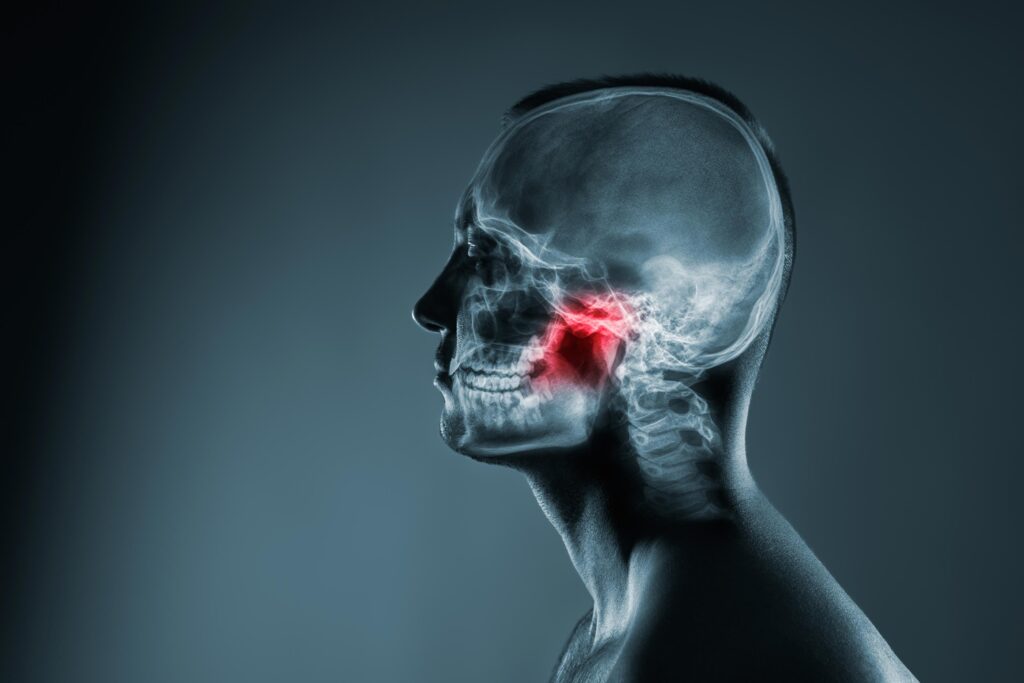
Dysfunction
- Joint sounds:
A painless symptom of TMJ disorders is a distinctive clicking or sometimes a grinding noise accompanied by limited movement in your jaw.
- Jaw locking:
Jaws getting stuck in either the open or closed position can result from TMD. Open locking occurs as a result of TMJ hypermobility in conjunction with contraction of the jaw-closing muscles, while closed locking of the jaw, preceded by a jaw popping, develops due to TMJ disk displacement.
- Bite changes:
The misaligned teeth put pressure on the muscles in your jaw, face, head, and neck, and affect the nerves running through them.
- Insomnia:
Sleep deprivation can also be an essential risk factor for TMD. According to research, over fifty percent of TMJ patients suffer from poor sleep quality, which is associated with increased pain and psychological stress.
- Restricted movement:
TMJ disorders may lead to limitations in the movement of your jaw, which will cause severe discomfort, and interfere with your daily life, as such complications prevent the mouth from fully opening, or the jaw from moving in specific directions.
Diagnosis Is Possible For Anything Concerning the Jaw Joint
Since the exact causes of TMJ disorders are not clear, no widely accepted test is available to accurately analyze them.
TMD usually manifests itself in the form of facial pain and limited jaw movements. A large retrospective study notes that the most common presenting signs and symptoms were facial pain (96%), ear discomfort (82%), headache (79%), and jaw discomfort or dysfunction (75%). Other symptoms may include dizziness or neck, eye, arm, or back pain.
Physical conditions that support the diagnosis of TMD may include abnormal mandibular movement, decreased range of motion, tenderness of masticatory muscles, pain with signs of bruxism (a condition in which you grind or clench your teeth), and neck or shoulder muscle tenderness. A clicking or locking of the TMJ can also occur as a result of joint dysfunction.
The diagnosis of TMJ is mainly based on medical history and physical examination findings; therefore your detailed medical history and dental records can help. Imaging studies may also be recommended to help discover the causes of your facial pain; they can assist when physical examination findings are questionable. The initial study is supposed to be radiography, while computed tomography is employed for the evaluation of subtle bone morphology. Magnetic resonance imaging and ultrasonography can also be used for the cases showing signs of TMD.
TMJ Disorder Begins Mildly, But It Rarely Stays That Way
There are a few simple home remedies to prevent TMD symptoms from becoming more severe. Self-care and lifestyle modifications may be enough to control mild-to-moderate symptoms of TMJ disorders. Gentle exercises can be very useful, and massaging the affected muscles around the jaw can also help. The self-care treatments involve the following:
- Relaxing your face;
- Not grinding your teeth;
- Avoiding constant gum chewing;
- Avoiding jaw clenching or tensing the jaw;
- Not resting your chin on your hand;
- Practicing good posture during the day;
- Applying moist heat or a hot water bottle;
- Minimizing the times you fully open your mouth;
- Distributing food evenly and chewing on both sides of your mouth; and
- Consuming only soft foods and avoiding chewy foods.
Jaw Pain Can Literally Drag You Down!
TMJ disorders are sometimes not serious, and their mild symptoms will fade after a short time, causing only minimal discomfort. In some cases, however, the conditions are severe and long lasting. You’ll know you need to seek medical attention and start treatment as soon as possible once they begin to affect the quality of your life.
To beat TMJ disorders, you can benefit from various treatment procedures, some of which apply conservative techniques that are noninvasive, meaning they don’t involve a surgical process, and will not alter the structure of your face, jaw, or joint. Since the most common jaw problems are temporary, these treatment techniques often prove to be quite effective in relieving pain and discomfort.
Moreover, despite being symptomatic treatments and not cures for TMJ disorders, these techniques are still useful for temporary pain relief in more severe cases. Irreversible treatments may be recommended when symptoms continue, come back often, or worsen over time.
Adjunctive with these treatments, medications may help relieve the pain associated with TMJ disorders. Natural substances from vegetable or mineral sources known as homeopathic remedies can also help. These herbs help relieve the pain associated with TMJ disorders:
- Clove (an oral anesthetic and infection fighter);
- Calendula (anti-inflammatory and antibacterial); and
- Rosemary (anti-inflammatory and antioxidant filled).
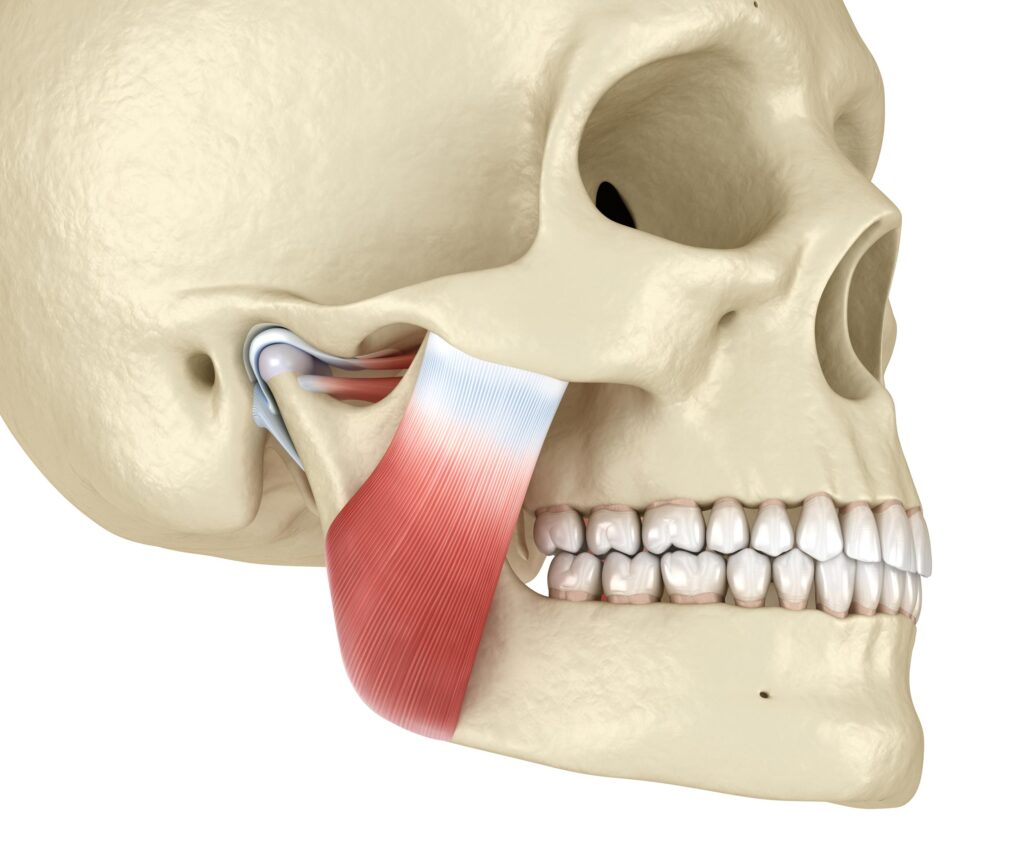
- Bio-stimulation laser
This type of laser therapy can initiate an anti-inflammatory response in the TMJ structures, and prevent the release of histamines and prostaglandins. This stimulation reduces inflammatory pain by increasing the blood flow to the treated area.
- Orthodontics
If crooked teeth and a deep bite are the causes of TMJ dysfunction, straightening the teeth with braces is the best option to fix the disorder.
If underdeveloped dental arches are the reason, comfortable and removable arch development appliances can adequately form the dental arches.
If the retraction of the chin is the culprit, functional jaw orthopedics may be the solution.
- Implants or crowns
As missing or worn-down teeth could result in TMJ problems, replacing them with metal-free zirconia implants can help alleviate the condition. Placing porcelain crowns on the worn teeth is also an effective treatment technique.
- Physical therapy
Physical therapy can be used in myofascial release, mobilization of the TMJs, and deep muscle therapy in order to reduce discomfort and ease the symptoms of TMJ disorders.
- Bite correction process
The association between temporomandibular disorders and bite disorders is a critical issue in dentistry. A bite analysis system (T-scan) allows for digitally recognizing high pressures after any oral restorations or reconstructions.
- Oral appliances
Repositioning the jaw to decrease clicking and relieve nerve-related pain is made possible with the help of stabilization splints. These bite appliances are plastic guards that fit over the teeth for a short time to target TMJ disorder without causing permanent changes in the bite.
- Botox
One 2012 study found that Botox therapies significantly lessened the pain and improved mouth movements in patients with TMJ disorders. It is generally instructed as a complementary treatment to other TMJ restoratives such as night guards or physical therapy. However, in some cases Botox therapy is all that is needed: This injectable helps diminish muscle spasm and jaw tension, both of which are known to worsen the symptoms of TMJ disorders. The results will last between three to eight months.
It Is Time for TMJ Disorder Patients to Live Life Pain-free
Regardless of the severity of the condition, professional advice is always essential for treating TMJ disorders.
Your pain relief is our priority at Aria Dental. You can take advantage of our holistic treatments, which employ ultra-modern technology and minimally invasive methods to help you resolve your jaw issues.
We have stories to tell, but we need your lips together and your teeth apart!








